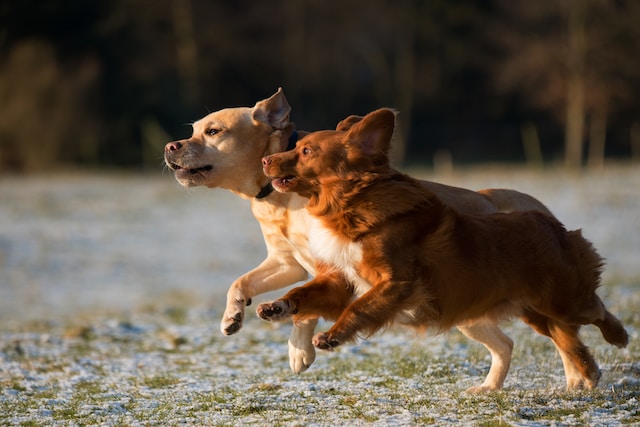Dog races have been around for centuries and while we have seen them featured in movies and on television, there is much more to these races than meets the eye. Despite what most people think, dog races can actually be a great way to exercise, bond with your pet, and promote responsible pet ownership. In this blog post, we’ll be taking a look at 10 facts about dog races that you may not know. From the different types of races available to the physical and mental benefits of participating in them, there is a lot to learn about this fun and exciting activity.
1) The history of dog racing

Dog racing dates back to ancient times, with evidence of organized races found in ancient Greece, Rome, and Egypt. However, modern dog racing as we know it today started in the late 19th century in the United States with the greyhound breed.
2) Different types of dog races
- Sled dog racing
- Lure coursing
- Sprint racing
- Endurance racing
- Drag racing
- Straight racing
- Weight pulling
- Cart racing
3) Greyhound racing

Greyhound racing is a popular type of dog race that involves a straight track with a lure at the end to motivate the dogs to run. The breed of dog used in greyhound racing is specifically bred for their speed and agility, and these races can reach speeds of up to 45 miles per hour. However, greyhound racing has faced criticism due to the mistreatment of the dogs involved and many countries have banned it altogether.
4) The controversy surrounding dog races
Dog racing has been surrounded by controversy for many years, with many animal welfare groups arguing that it is cruel and inhumane. Critics say that the dogs are often mistreated and forced to run for long distances without proper rest or medical care. As a result, many countries have banned dog racing altogether. However, proponents of dog racing argue that it can be done ethically, with proper breeding and training, and that it provides a livelihood for many people in the industry.
5) The importance of proper breeding and training for racing dogs

Proper breeding and training are essential for racing dogs to reach their full potential. Dogs bred for racing must possess certain traits and qualities, such as speed, stamina, and agility, that are needed to excel on the track. It’s important to train these dogs properly to ensure that they are healthy, happy, and able to perform at their best. Without proper breeding and training, racing dogs may not be able to compete at the highest level or may suffer from injuries or other health issues.
6) Common injuries that racing dogs can experience
- Broken bones
- Torn muscles
- Joint problems
- Heat stroke and dehydration are also common issues for racing dogs, as they are pushed to their physical limits in high-stress environments. It is important for owners and trainers to prioritize the health and well-being of their animals, and take necessary precautions to prevent and treat any injuries that may occur. Proper nutrition, hydration, and rest are crucial for maintaining the overall health of racing dogs.
7) How dog racing has evolved over time

Dog racing has come a long way since its early days as a popular pastime among the wealthy. Originally, the races were held on dirt tracks and the dogs were trained for short bursts of speed. However, as the sport grew in popularity, improvements were made in breeding and training techniques to produce faster and stronger racing dogs. Today, dog racing has moved to synthetic tracks and racing dogs are bred and trained specifically for endurance, making for more exciting and competitive races.
8) The economics of dog racing
Dog racing is a multi-billion dollar industry that involves breeding, training, and racing dogs for profit. The revenue generated from betting on dog races is a significant part of the economics of dog racing. However, this industry is facing a decline in recent years due to the controversy surrounding the treatment of racing dogs and the availability of online gambling. Despite this, dog racing continues to exist in many parts of the world as a source of entertainment and revenue for those involved.
9) Dog racing around the world

Dog racing is popular in many countries, including the United States, the United Kingdom, Australia, Ireland, and Mexico. However, it is banned in some places, such as Italy and Norway, due to concerns about animal welfare.
10) The future of dog racing
The future of dog racing remains uncertain, as the industry faces increasing criticism from animal welfare groups. Many countries have already banned dog racing, while others are considering legislation to phase out the sport. Despite efforts to improve the treatment of racing dogs, the controversy surrounding dog racing may ultimately lead to its demise.


